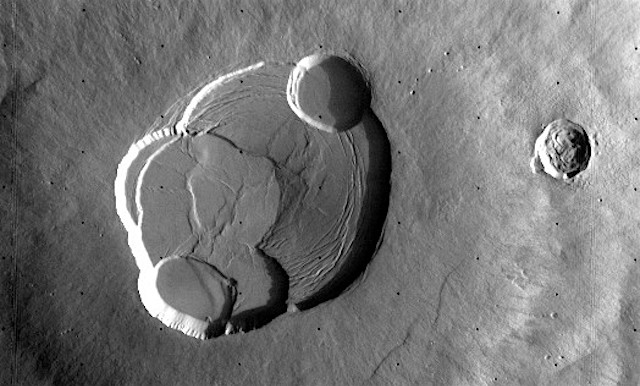 The summit of Olympus Mons displays lava flows, some of which are truncated by the caldera, that appear to have flowed uphill. Because lava flows downhill, this mismatch between the flow direction and present-day topography suggests that the terrain has been tilted subsequent to the formation of the lava flows and collapse of the caldera.
The summit of Olympus Mons displays lava flows, some of which are truncated by the caldera, that appear to have flowed uphill. Because lava flows downhill, this mismatch between the flow direction and present-day topography suggests that the terrain has been tilted subsequent to the formation of the lava flows and collapse of the caldera.
Recent work by Mouginis-Mark and Wilson [published in Icarus] provides evidence for late-stage inflation of the summits of both Olympus Mons and Ascraeus Mons based on 351 individual lava flows and channels on Olympus Mons and 126 individual flows on Ascraeus Mons mapped on Context Camera (CTX; ~6 m/pixel) and High Resolution Imaging Science Experiment (HiRISE; ~0.25 m/pixel) images.
Because the inflation took place post-caldera collapse, this puts the timeframe for inflation at <200 Myr based on crater counts, geologically recent for Mars, meaning that magma beneath Olympus Mons and Ascraeus Mons remained molten longer than previously estimated. [More at links]








